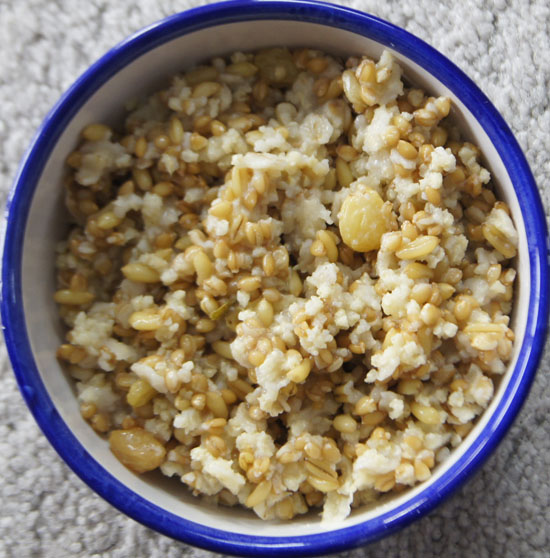Pressure Cooker recipes: Pressure Cooking Today
I bookmarked this site a year or so ago and then forgot about it. I open the link today and find another very good site for pressure cooker users. The author is a woman named Barbara who states “I started Pressure Cooking Today to share my love of pressure cooking and challenge myself to create and share fabulous new recipes”.
The “tips” section links to articles on the benefits of pressure cooking; gift guides; how to use pressure cookers, both in general and brand specific; how to convert a conventional recipe to a pressure cooker recipe; and how to get a pan out of a pressure cooker (for instance, when you place a cake pan in a pressure cooker).
Recipes? There are a lot. Most are written by the site’s author (if not, the guest writer is introduced), and she includes a discussion of the recipe.
Ads, ads, ads. But I am getting used to this fact of life on the internet.
The recipes below are ones I might like to try and/or cover the scope of the recipes on this site.
Creamy Mashed Potatoes. I decide to make these for our Thanksgiving dinner! Hopefully they work. The Pressure Cooking Today recipe is this:
Peel and quarter 6 russet potatoes. Add one cup of water to the pressure cooker pot, then place a trivet or steamer basket in the pot. Add the potatoes. Cook for 5 minutes on high pressure, fast release, and check the potatoes. If they are not fork-tender, repeat this step and check after “a few minutes”. (they are essentially steamed)
p.s. these worked out great!
Pressure Perfect by Lorna Sass (my book) calls for 3 pounds peeled russets cut in one-inch chunks, add one cup water, pressure cook on high pressure for 8 minutes, check for done-ness, and pressure cooking a few more minutes if necessary. (She does not mention a trivet.)
At this point, both authors state to put the potatoes through a ricer (I do have one of these) or food mill or use a potato masher (have one of these too). Then, add melted butter and warmed milk or cream.
My family tradition is to add butter and milk and cheese and mash with a portable mixer. I never warm the milk or melt the butter, and I also add cheddar cheese and some sour cream. I am going to stick to my tradition, and mixer-mash the potatoes right in the pressure cooker pot. Then, I can cover them with a lid and turn the pot to “warm”. That way, I lessen the burden on my crowded stove top, which will be full of pots and pans making gravy and cooking peas and beans for our Thanksgiving dinner.
Let’s hope this works!
Conclusion: Perfect results!
Country-Style Barbecue Pork Ribs. I often find country-style pork ribs on sale. This boneless cut of meat is often very fatty. Barbara states “Cooking them in the pressure cooker helps melt away the fat and leaves fork tender meat”. The ribs are cooked in a sauce of crushed pineapple, ketchup, onions, dry mustard, and fresh ginger.
Bone-In Beef Short Ribs. I tried these, and although the recipe worked, I don’t like the beef short ribs I get in my local stores. Too much bone, too much fat, too little meat. The meat is sort of tough and the flavor is not stupendous.
Lemon Cranberry Breakfast Farro. Someone else has discovered farro! I covered it in my grains posts series.
Frozen, boneless chicken breasts. Forgot to thaw something for dinner? No problem – just put a couple boneless breasts in the pressure cooker, cook on high for one minute, and you have thawed chicken breasts, just lightly cooked on the very outside and ready to be diced for recipes. Need an idea for dinner using said breasts? Try one of these pressure cooker recipes: Chicken Bacon Penne Pasta in a Garlic Cream Sauce, Honey Sesame Chicken, Chicken Enchilada Pasta (Rotel tomatoes, enchilada sauce, rotini pasta, lots of cheese, and the rotini is cooked directly in the sauce). And these are just a few of her suggestions.
Pressure Cooker Mongolian Beef. This recipe calls for flank steak, fresh ginger and garlic, soy sauce, brown sugar, and green onions. It’s “a pressure cooker version of PF Changs popular beef dish”.
Boneless Pork Chops. This recipe is like the “no-peek” beef dish that I used to make, often in a slow cooker, with mushrooms and a packet of dried onion soup mix. The thickness of the pork chops is discussed, which is helpful to me. There are other pork chop recipes too on this site.
Also browse this site’s soup and dessert categories, if you are interested.

